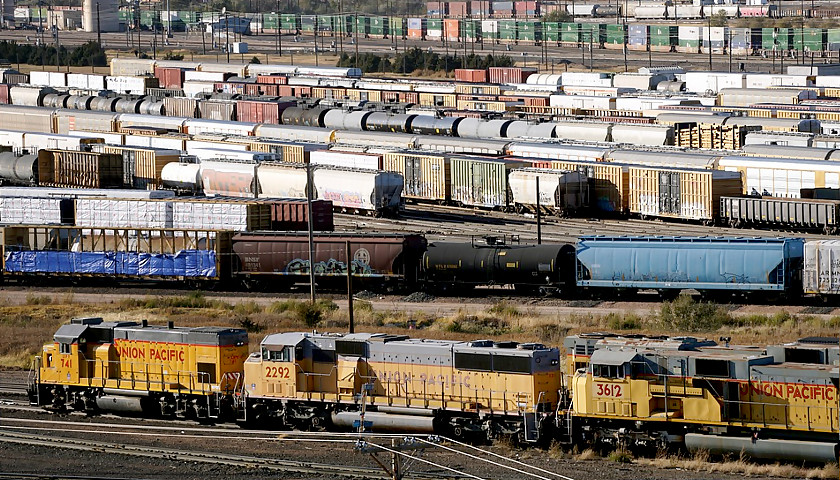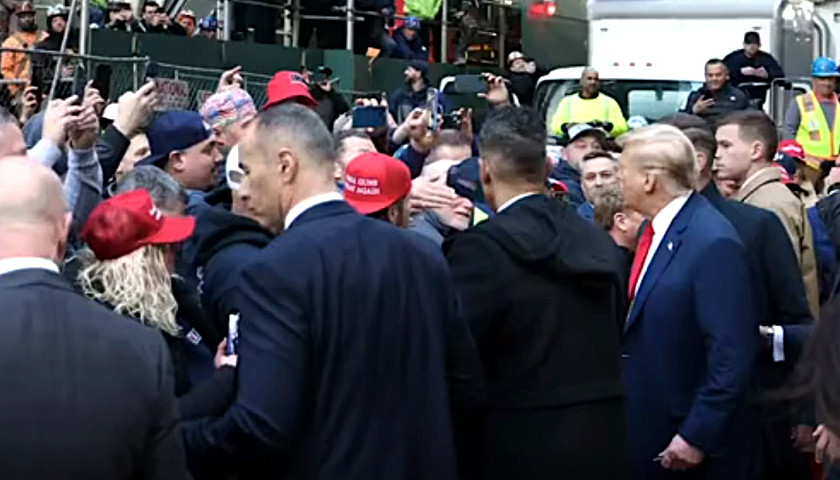by Bethany Blankley
After $3 trillion in federal stimulus money went to individuals, corporations, hospitals and numerous industries, the Class 1 freight industry has maintained its transportation operations and provided critical resources nationwide without asking for, or receiving, federal taxpayer money.
Other industries and lawmakers can look to how the freight industry has weathered the economic downturn and coronavirus restrictions without receiving any federal bailout money, analysts note.
“The freight rail industry is one of the most cost-effective and efficient transportation networks in the world,” the American Railroads Association (ARA) argues. “Fueled by billions of dollars in annual private investment – $25 billion on average – railroads maintain and modernize the nation’s nearly 140,000-mile private rail network to deliver for America.”
Research from Towson University’s Regional Economic Studies Institute found that in 2017, Class I railroads’ operations and capital investment supported over 1.1 million jobs, $219.5 billion in economic output, and $71.3 billion in wages, while also creating nearly $26 billion in total tax revenue.
In a typical week, railroads deliver roughly 60,000 carloads of food and agricultural products. A single rail car moves enough wheat for 258,000 loaves of bread, enough corn for 480,000 bags of Fritos, or enough barley for 94,000 gallons of beer, ARA states.
The Cybersecurity and Infrastructure Security Agency (CISA) designated the freight railroad industry as “critical” and instructed state and local governments to ensure railroads keep goods moving in the face of stay-at-home orders.
Yet the industry received no federal coronavirus federal stimulus money despite a dramatic decline in shipments and lost revenue, while still reporting substantial liquidity.
They were able to do so, analysts argue, because of deregulation enacted 40 years ago under President Ronald Reagan. The Staggers Rail Act of 1980 largely removed rigid price controls and operating requirements enabling companies to invest in upgrades and improvements to their intra-state network.
Compared to the bankruptcies of the 1970s after deregulation, “America’s freight rail industry went from facing an existential crisis to being the envy of the world in just a few decades,” Marc Scribner at Reason Foundation wrote.
“During the last four decades, America’s private freight railroads have become profitable again, with traffic volumes up 90 percent, productivity up 150 percent, inflation-adjusted average shipping rates down 45 percent, and accidents down 80 percent,” Scribner added. “In recent years, freight railroads have been averaging $25 billion annually in network investment and their return on investment has risen from a two percent average during the 1970s to more than 10 percent during the 2010s.”
On recent earnings calls with investors, industry executives reported liquidity despite suffering losses from a major sector of its business, automobile transportation, since production of automobiles has been halted for about two months. Their financial condition is “a testament to the wise business management practices within the industry,” Ted Greener, ARA’s executive director for public affairs, told The Center Square.
“It is worth noting that the rail industry has long fought against increased rate regulation in the sector by the federal government,” he said. “It is safe to say that had such a regulatory scheme been in place in the lead up to this pandemic, the industry would be on much less firm ground.”
Consumers and taxpayers have also not bailed out railroads, Steve Pociask at RealClearPolicy writes, because of “a regulatory system, led by the U.S. Surface Transportation Board, that to date has avoided utility-style rate or earnings regulation in the sector.”
Before the coronavirus shutdown, the agency was considering capping how much railroad companies could earn in a year, including imposing an across-the-board utility-style rate regulation. But it was actually deregulation that has helped these companies continue to provide necessary goods and services to Americans during the nationwide coronavirus shutdown, he and others argue.
“For railroads, the impact of imposing these regulations would have a devastating effect on liquidity,” Pociask said.
If rate caps were imposed, “it stands to reason that investment in the rail network would fall, and quite likely so would its dependability and efficiency – just as companies that ship over rail will need those qualities during the hard slog back to economic recovery,” he added.
Compared to the heavily regulated transportation airline and mass transit industries that were reporting losses before the coronavirus ever hit, federal bailouts for the airlines, airports and mass transit totaled nearly $90 billion.
– – –
Bethany Blankley is a contributor to The Center Square.





